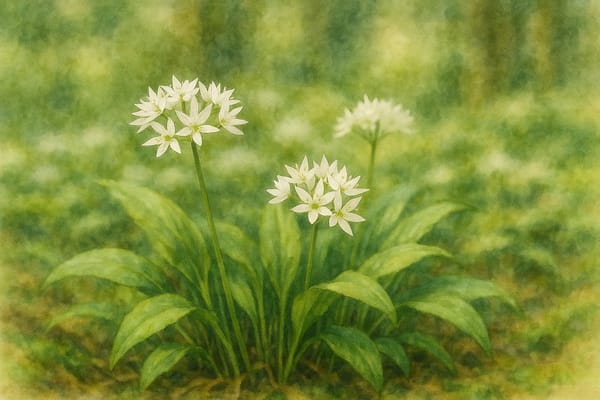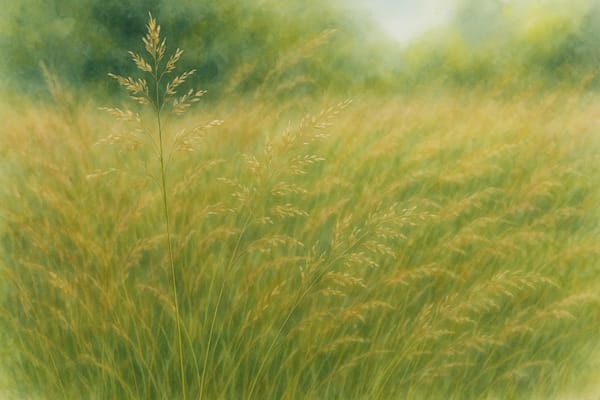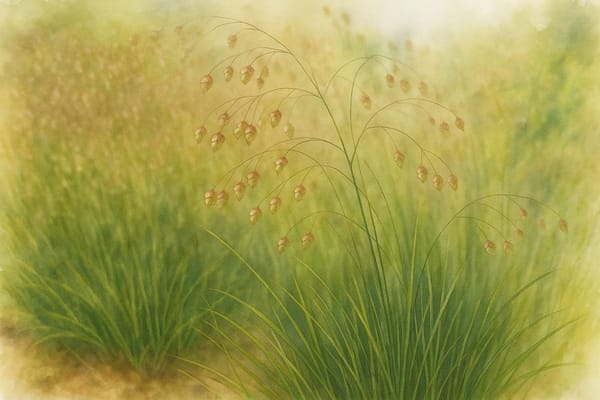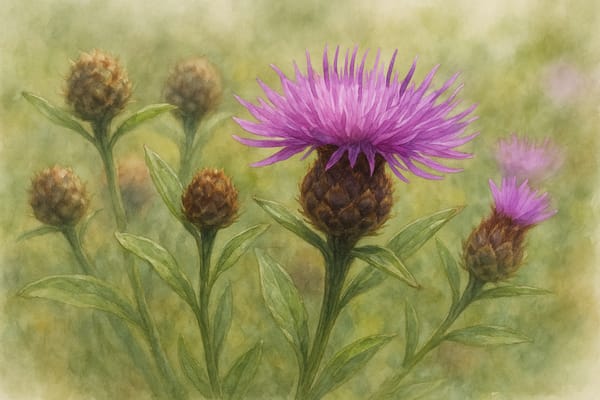A Symbol of Strength, Renewal, and Woodland Heritage
Historical and Cultural Significance
Folklore and Protective Magic
In Cornish and British folklore, wild garlic was prized for its protective powers, believed to ward off evil spirits and witchcraft. Its pungent scent made it a symbol of purification, with legends telling of its magical role in shielding homes, people, and livestock.
Strength, Renewal, and Bear Lore
The Latin name ursinum links to bears—said to eat wild garlic after hibernation to regain strength. This gave rise to its role as a symbol of vitality and renewal, representing the awakening of life after winter’s dormancy.
Culinary and Medicinal Heritage
Wild garlic has been valued for over 12,000 years as a healing herb and staple food, used in soups, broths, and to flavour butter. It served as an antiseptic, digestive aid, and remedy for infections, so valued that ancient laws protected its harvest for medicinal use.
Cornish Foraging and Community Tradition
In Cornwall, wild garlic remains a beloved springtime feature of ancient woodlands and coastal paths. Its gathering marks the start of the foraging season—a time-honored tradition connecting communities to nature and their landscape’s seasonal rhythms.
Growing Wild Garlic in Coastal Gardens
| Requirement | Details |
|---|
| Light | Partial shade preferred; tolerates sun in cool climates |
| Soil | Moist, well-drained, humus-rich; slightly acidic to neutral |
| Water | Consistently moist; avoid waterlogging |
| Salt Tolerance | Moderate; thrives in sheltered, breezy coastal areas |
| Hardiness | Hardy in the UK; tolerates wind and varying soil conditions |
Care and Cultivation Tips
- Site Selection:
Choose shady or semi-shaded spots, under trees or along hedgerows. - Planting:
Plant bulbs in autumn (8 cm deep), or sow seeds lightly in autumn or spring. - Soil Preparation:
Enrich with leaf mould or compost to enhance moisture retention and replicate woodland soils. - Watering:
Water regularly during establishment and dry spells. - Harvesting:
Harvest leaves sparingly from March to May. Avoid over-picking to allow plants to thrive. - Containment:
Wild garlic spreads by seed and bulbs—contain in beds or monitor spread to prevent invasiveness. - Companions:
Pairs beautifully with bluebells and other woodland edge plants.
Coastal Garden Notes
Wild garlic thrives in sheltered, shady corners of coastal gardens, forming lush groundcover and providing early nectar for pollinators. It offers beauty, culinary use, and a touch of ancient tradition with minimal care in suitable conditions.
Summary
Steeped in folklore, culinary tradition, and natural symbolism, wild garlic represents strength, protection, and spring’s renewal in Cornwall and the UK. In coastal gardens, it flourishes in shady, moist soils—offering both beauty and a living link to Britain’s ancient woodland heritage.











